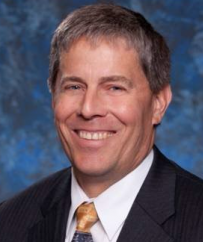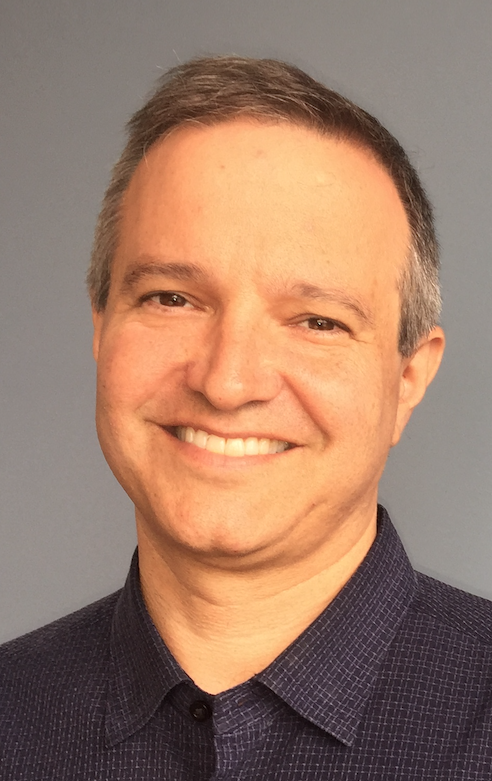After Hurricane Sandy in 2012, government agencies nationally began to underwrite building and installing resilient energy microgrids for critical facilities such as hospital. As a part of the California Energy Commission’s Electric Program Investment Charge grant challenge, $4.77 million was awarded to Charge Bliss to develop and launch a solar-storage microgrid at Kaiser Permanente’s Richmond Medical Center. TPR sat down with Kaiser Permanente’s Ramé Hemstreet, Vice President of Operations and Chief Sustainable Resources Officer, and Seth Baruch, National Director for Energy and Utilities, to learn about the first California microgrid to connect renewable energy to a hospital’s pre-existing backup power system that was previously diesel-fueled.

Ramé Hemstreet
"This project is part of our larger commitment to eliminating our Scope 1 and 2 greenhouse gas emissions and being a partner on the way to a carbon-free grid in California." - Ramé Hemstreet
Ramé, introduce our readers to Kaiser Permanente Richmond Medical Center’s new microgrid, which appears to be the first renewable hospital microgrid in California. What’s the significance of this installation for Kaiser Permanente’s larger efforts to achieve carbon neutrality?
Ramé Hemstreet: Kaiser Permanente’s mission is to improve the health of the communities that we serve. This project is one aspect of our goal to “do no harm” environmentally and eliminate our contribution to climate change by achieving carbon neutrality in 2020.
Renewable energy is an important part of that goal. The microgrid itself will also help enable California to move toward a carbon-free grid. The more storage and islanding capability incorporated into the grid, the better the grid’s resilience and ability to absorb utility-scale renewable energy.
This project is part of our larger commitment to eliminating our Scope 1 and 2 greenhouse gas emissions and being a partner on the way to a carbon-free grid in California, and we hope the entire country eventually.
Seth, what does being independent of the electric grid enable Kaiser Permanente’s Richmond Medical Center to achieve?
Seth Baruch: Day to day, this infrastructure significantly reduces the peak demand at the facility. On commercial customer bills, peak demand charges are quite high—often almost half the bill. Discharging the battery during those peaks allows us to cut that demand, resulting in cost-savings to the facility. We’ve seen substantial reductions in our utility bills from this battery-solar microgrid, and that helps achieve our affordability mission.
It also improves the resiliency of the facility in the event that the grid and the backup generators are not available. The combination of solar arrays and battery storage onsite can provide power to the critical care load to the facility potentially indefinitely. That redundancy provides increased resiliency during a rare catastrophic event, and it’s one of the main reasons this project was supported by the local facility.
In your opinion, what attracted the California Energy Commission to award such a significant financial contribution to this backup battery and solar configuration project through the latter’s EPIC grant program?
Seth Baruch: The grant recipient is Charge Bliss, who implemented the project at our facility. They worked hard to show the Energy Commission that a microgrid at a critical care facility would be both very important and replicable. That was one reason the CEC was so interested.
We also worked closely with Office of Statewide Health Planning and Development (OSHPD), the agency that regulates hospitals in California. Our project is the first time a backup battery and solar configuration has been approved at an OSHPD-regulated facility in California. The idea is that if you can do this at one hospital, it’s a stepping-stone to doing it much more broadly across the state.
The awardee of the CEC’s EPIC grant, Charge Bliss, beat out two California universities for the funds. Comment on the role Charge Bliss played in implementing this project.
Seth Baruch: It’s remarkable because Kaiser Permanente has traditionally worked with more established companies, but we’ve had a very good relationship with Charge Bliss, and they’ve implemented the project very well. They’ve responded to the needs of our chief engineer and local site manager in Richmond. Charge Bliss also had subcontractors that know the hospital sector very well, and their comfort and familiarity with the medical environment was useful.
They built a very good system for us, and with their help in monitoring, we have been able to accurately record how much solar is being produced and how much our peak demand charges are being reduced, giving us a good record of the savings we’ve generated.
What due diligence did Kaiser Permanente undertake before deciding to collaborate and invest in this first-of-its-kind microgrid project?
Seth Baruch: The first thing we think about with all onsite solar and storage projects is whether it’s a technical fit. Is the load profile at that facility conducive to implementing a project like this? When we looked at our electricity bill, we saw that there were some substantial peaks that could be mitigated, therefore reducing costs, and that the load of the hospital could support the 250 kW of solar.
Another technical question was about what infrastructure in the hospital could the microgrid support—things like: Are there enough amps on this circuit? Is there a way to feed energy to each individual part of the hospital? That helped us define which parts of the critical care load could be backed up by the grid or islanded from the grid.
Beyond the technical aspects, another important component was support from the local facility. Richmond has traditionally been an underserved community, and ours is the only hospital that serves that part of Contra Costa County since 2016. That was one reason that made the Richmond Medical Center a great pilot site, and David Leighton, the COO at the facility, supported it right off the bat.
Support from OSHPD was also key—and hats off to the CEC and Charge Bliss, because they knew right from the beginning that they needed to involve OSHPD. We had an informal technical committee that included the OSPHD folks to brainstorm how this system could be configured.
We had great local support, we had technical capacity, and we could see from our load profiles that we would get substantial benefits. Those are a few examples of the things that went through our minds as we were looking for possible facilities for this project.
Given the significant investment, speak to the expectations for how Kaiser Permanente will integrate microgrids and resilient energy structures into its other California and national facilities going forward.
Seth Baruch: Since this project was implemented and publicized around the Kaiser Permanente network, we’ve gotten more than a half-dozen inquiries from our facilities around California and beyond, including Hawaii, asking if we could do there what we did in Richmond. We’re going through the same process of technical assessment for these interested facilities as we did for the Richmond Medical Center.
As we look for opportunities to replicate this project, we’re seeing how microgrids might have to come in different shapes and flavors depending on the needs of the particular facility. How do we design a microgrid so that it meets the specific objectives of the facility? For example, one facility might be a medical office building that isn’t open 24/7, but needs to back up its pharmacy’s refrigeration systems to protect the medications. A microgrid there would be different than at a facility that’s building a new hospital tower and wants to avoid installing a whole new backup generator.
We’ll have a sense in the coming year or so about exactly how fast and in what ways we’ll be able to replicate the Richmond project. It’s certainly going to be replicated in one way or another, but it’s still early days.
Address the role of electric vehicle charging and zero-emission transportation in the Richmond project, as well as in Kaiser Permanente’s sustainability initiatives statewide and nationally.
Seth Baruch: Our national EV charging installation program now consists of about 340 charging stations installed at 36 facilities (and growing), primarily in California. We see this as a major part of our sustainability program, and it provides our employees and members the convenience of being able to charge their vehicles while at our facilities.
We work with the sites to get through permitting and design and to figure out how many charging stations are needed to achieve a decent level of utilization, which to a certain extent involves market research on EV ownership in and around the area. The Richmond Medical Center is one of our sites with EV chargers, and we expect to install another 60-70 this year around the country.
Was it necessary to tweak this project to comply with local building codes—or were there building codes that needed tweaking to make the project realizable?
Seth Baruch: In this case, there was no specific tweak we needed to make. We worked closely with OSHPD as we designed and configured the system, so that when we applied for the permit, the project already met all of their requirements. This involved routine things like making sure that the circuits met the maximum amount of electricity input, that the batteries had cooling systems and fire suppression systems, and that the garage that the solar array sits on top of had the proper support.
Speak to where and when replicating similar energy resiliency projects at a medical facility would not work.
Seth Baruch: A project like this wouldn’t necessarily make sense in places where energy costs are low, or where the load profile wouldn’t support the investment required. In some places, you just may not have the need.
We have 39 hospitals and hundreds of medical office buildings. The number of places where a microgrid would actually make sense is a minority of all Kaiser Permanente facilities, given the vast array of buildings we have and that most of them are 9-5 medical offices. But the number where a microgrid would work could be in the many dozens, and particularly larger facilities like hospitals. We’ll know more as we roll out future projects.
How have the utilities, which have provided distributed energy to hospitals for a century, responded to the challenge of onsite, renewable microgrids like Kaiser Permanente’s new Richmond generation plant?
Seth Baruch: The utilities have been supportive and have not expressed concerns to me. We worked very closely with them to do interconnections, and we net meter [sell power back to the utility when on-site generation exceeds demand] back to them. In fact, utility representatives have generally been supportive of all our onsite generation initiatives.
Lastly, Ramé, you were the expert charged with overseeing the integration and coordination of Kaiser Permanente’s $3 billion-per-year, 5,000-employee National Facilities Services organization. If you were to reflect back on the Richmond microgrid project a year from now, what do believe will be the hallmarks of success?
Ramé Hemstreet: I hope to report that this project has reduced our operating costs at our facilities, contributing to our goal of becoming ever more affordable. And I hope to report that it has advanced not only our own environmental stewardship and our goal to become carbon neutral, but also the state of California’s efforts to lead the nation and the world in proving that you can build a reliable and clean electricity grid.
- Log in to post comments




